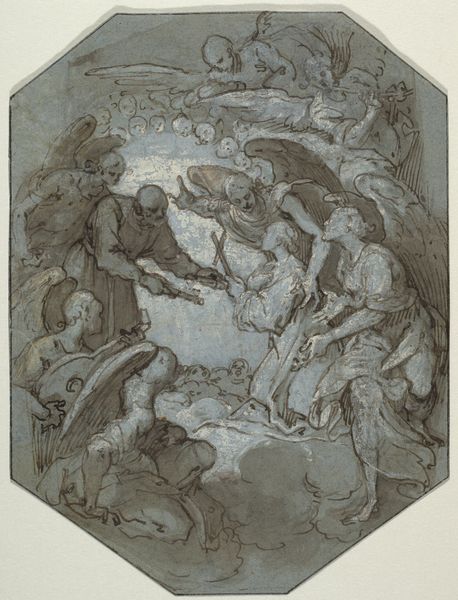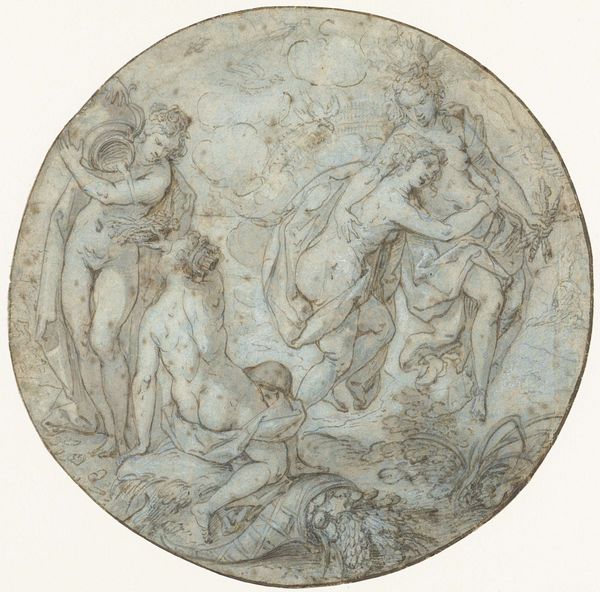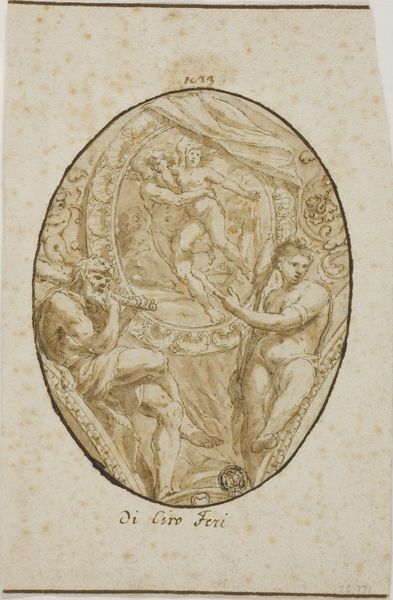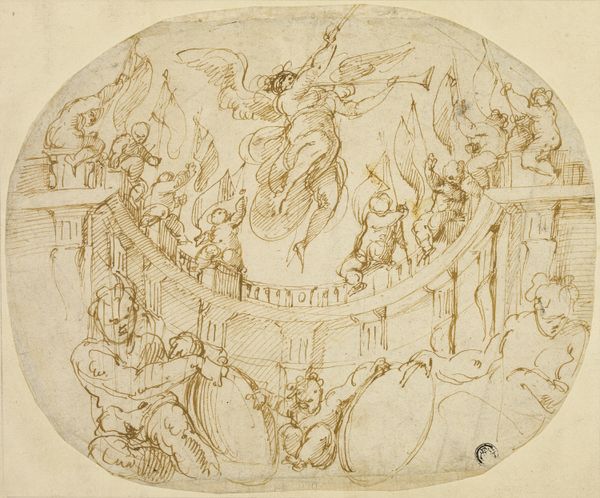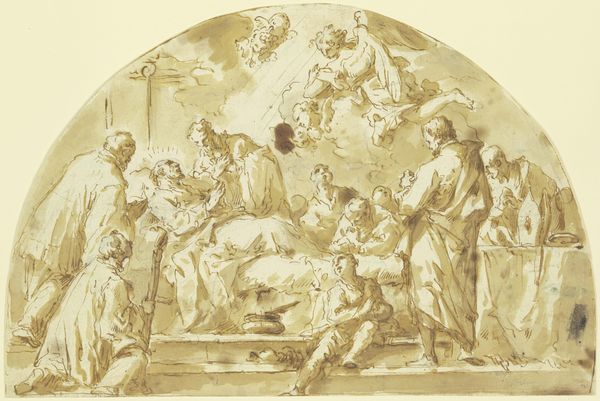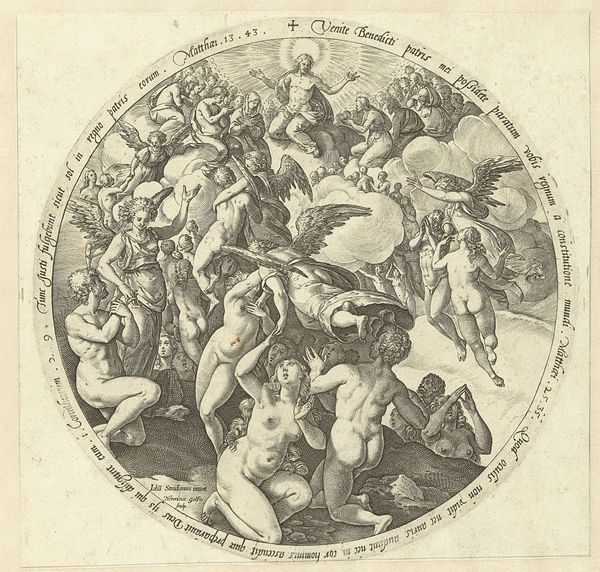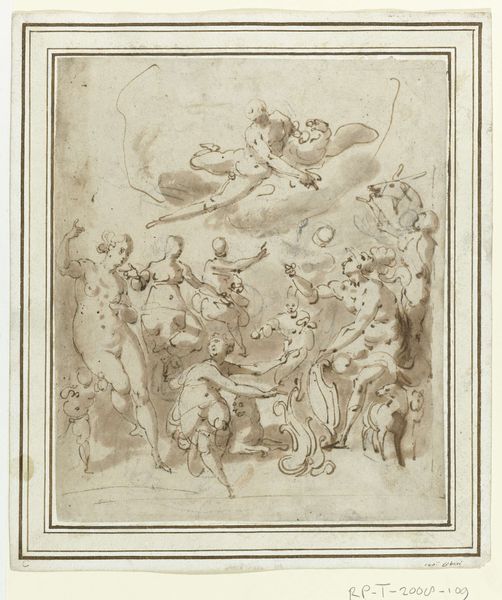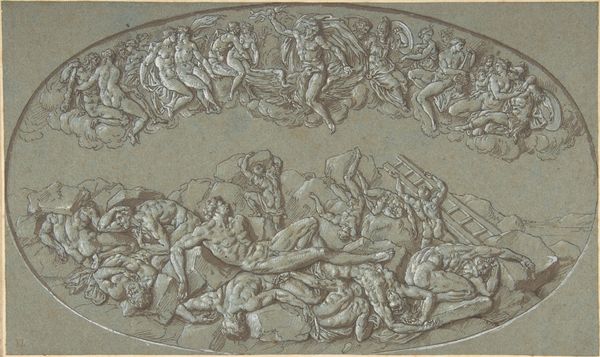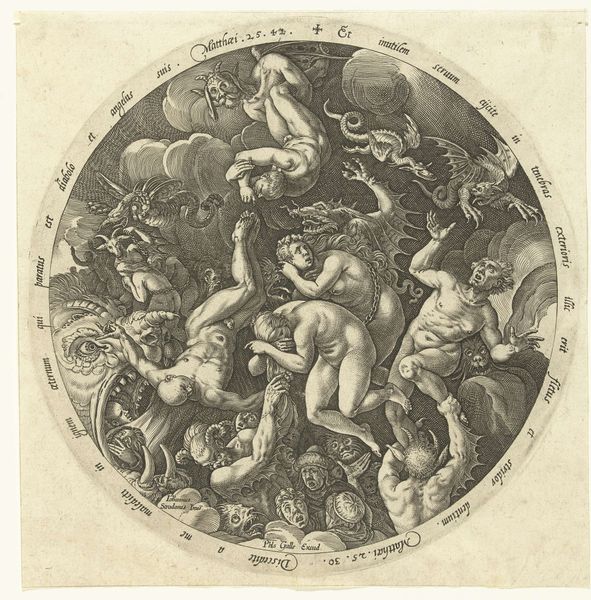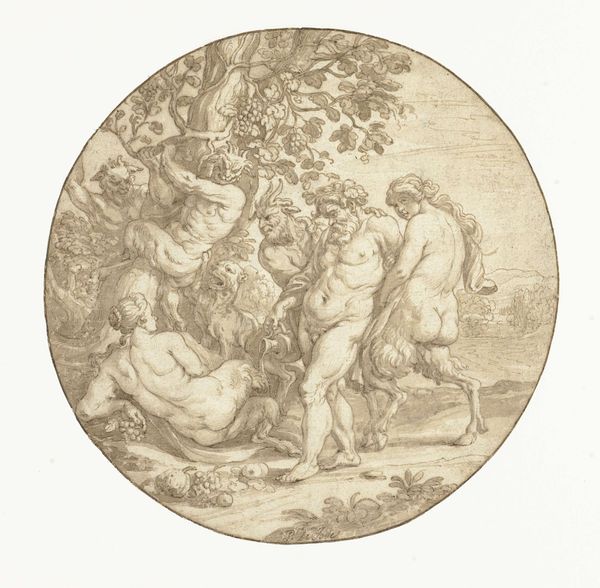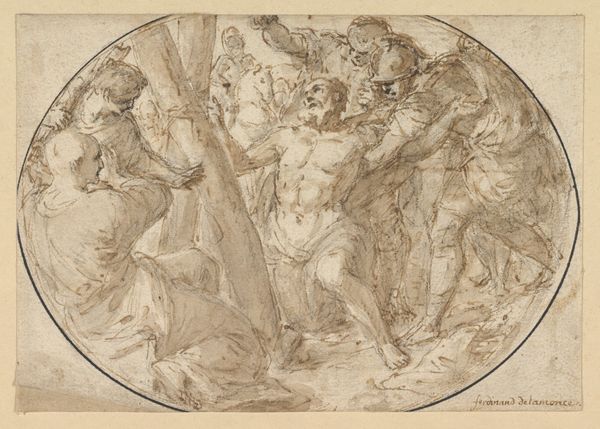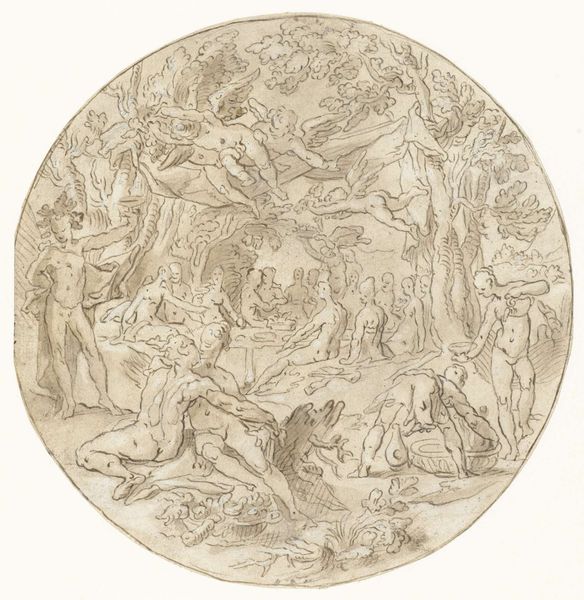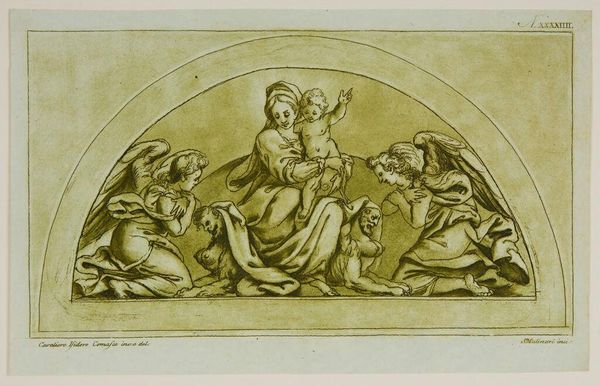
drawing, ink, pencil
#
drawing
#
baroque
#
pencil sketch
#
etching
#
figuration
#
ink
#
pencil drawing
#
group-portraits
#
pencil
#
history-painting
#
academic-art
Dimensions: height 202 mm, width 235 mm
Copyright: Rijks Museum: Open Domain
Curator: Welcome. Before us is a 17th-century drawing entitled “Singing Angels,” attributed to the Italian Baroque artist, Guido Reni, residing here at the Rijksmuseum. Editor: It's remarkably ethereal. The muted tones give it an otherworldly quality, as though the entire scene is unfolding on some hazy, celestial plane. Curator: Precisely. Reni employs delicate lines and washes to convey a sense of divine grace. Observe the composition—the figures arranged within a tondo format, creating a harmonious, self-contained visual space. Semiotically, the circle often represents perfection and unity. Editor: It's more the process itself that captivates me— the visible pencil strokes, the cross-hatching to build shadow... This wasn't conjured into existence; it was meticulously constructed through labor. Look at the density of the shading in the angels' wings, then the sparse, almost skeletal lines that define their garments. Curator: Yes, and how Reni masterfully manipulates light and shadow. Notice the subtle variations in tone, the way light gently caresses the angels' faces, bestowing upon them an almost palpable sense of beatitude. Reni imbues this piece with Baroque theatricality through his mastery of chiaroscuro. Editor: It’s also the accessibility of the medium, isn’t it? Pencil and ink—common materials transforming into something venerated, spiritual. It challenges the traditional hierarchy between craft and art, showing the inherent value of these raw components. One thinks about who had access to quality paper, inks. This drawing is also product of its socioeconomic and labor context. Curator: Interesting point. It makes us consider this work through the lens of Reni's artistic process itself. How he moved away from darker colors, how his sketches capture form, gesture and emotion efficiently. It also represents a distinct phase within his evolution of representing sacred themes through accessible forms. Editor: In the end, though, I am taken by the artist’s sheer technical prowess and this sense of lightness, achieved with what are actually fairly humble means. Curator: Agreed. "Singing Angels" invites us to delve beyond surface representation, to meditate upon fundamental elements that comprise and inform art creation. Thank you for joining me on this exploration.
Comments
No comments
Be the first to comment and join the conversation on the ultimate creative platform.

